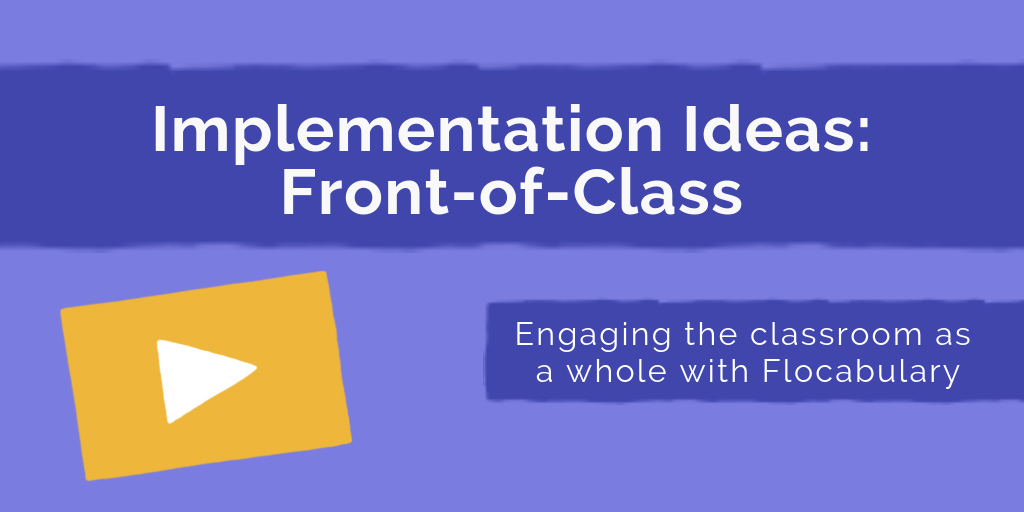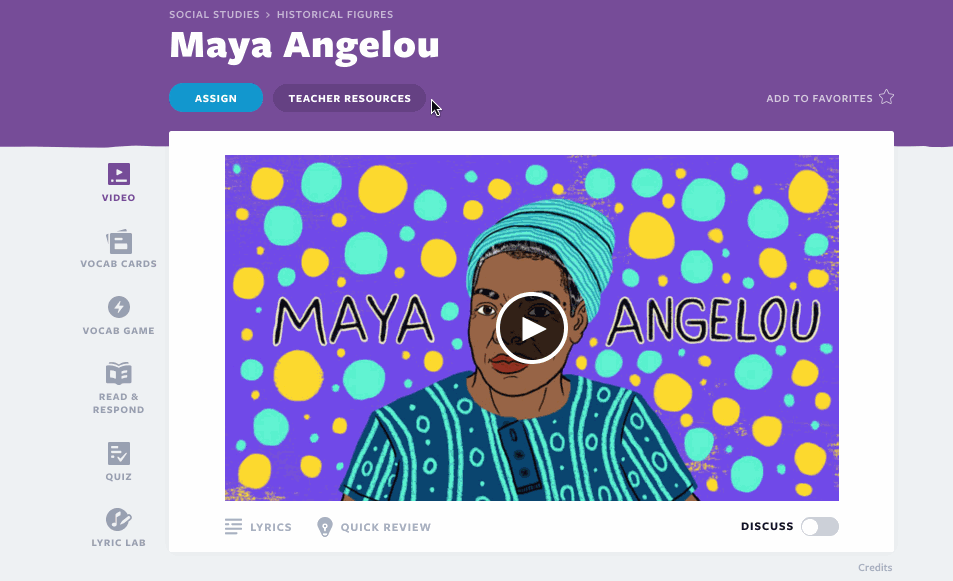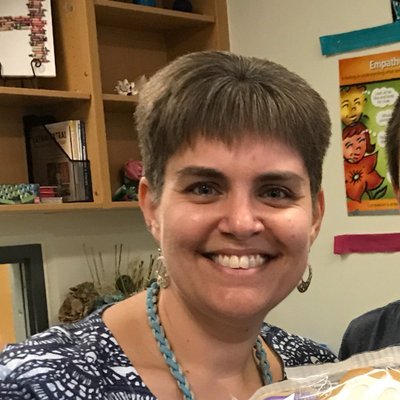
Implementation Ideas: Engage Every Student Front-of-Classroom
It’s no secret that Flocabulary works well as a front-of-classroom tool. Our lessons engage students and bring classrooms together. And while our assignable tools are helpful, they are not the end-all-be-all for effective implementation!
There are many ways to interact with Flocab lessons in a front-of-class format outside of showing the video lessons—whether that’s through Discuss Mode, Read & Respond or other activities! When teachers explore and utilize Flocab’s resources, it makes lesson plan creation easier and helps increase students’ chances of grasping and learning content. We spoke to Flocabulary educators about their favorite elements that they use in addition to video lessons to keep their students engaged and get the most out of the tool.

Wade Whitehead
5th Grade Teacher, Virginia
My ‘required’ curriculum may be our WHAT, but Flocabulary helps build a relevant, exciting and fully differentiated WHY.
I love using Flocabulary front-of-room to introduce, to review, and to remind. It’s a terrific center for whole-class discussion and provides a great resource when misconceptions or unexplored questions arise. My students and I often use printed lyrics as a discussion tool. They also allow many students to connect to printed poetic word, which opens the gate to poetry and other written genres.

Allison Schalk
Digital Learning Coach, Indiana
Our teachers love the Read & Respond activity. Not only do the passages explain more content, but they also help reinforce those reading comprehension and inferencing questions our kiddos are seeing on standardized tests.
And students remember the videos. Simple as that. I still remember teaching “Transformation” from the SAT Vocab 10 years ago. I can still walk up to students 5 years later and say “it’s seminal” and they can tell me back “and original.” That’s the power of music.

Joquetta Johnson
Library Media Specialist,
Maryland
As a front-of-classroom tool, don’t think of it as just this hook. It’s so much bigger than that. This is a method to be able to teach content. This is a best practice for instructional practices.
Any teacher with a Flocab subscriptions has access to the Teacher Resources, which can be found on every lesson. Teacher Resources can be a huge benefit because they include printable handouts and activities to accompany the video lesson. From quick skill review worksheets, to more interactive and creative activities, they are great to incorporate into any unit. Using handouts in conjunction with the lesson builds upon the content that students are learning, and gives your Reading/Writing learners a chance to interact with the subject on paper.


Cheryl Van Laeken
5th Grade Teacher, Indiana
I use the printable activities as a way to assess whether or not my students are understanding the topic I am teaching. I use the lessons to introduce a new concept to my students and make my lessons more engaging. It is such a fun way to get kids interested in different topics, and my kids love them.

Reagan Habermacher
5th Grade Teacher, Texas
I use the printed materials as practice for kiddos that are struggling. Flocabulary is a great way to improve vocabulary skills, context clues skills, and better word choices in student writing. When starting to use Flocab as a front-of-classroom tool, get with other teachers and talk about different ways it can be used!

Joquetta Johnson
Library Media Specialist, Maryland
I use the teacher handouts and the resources, sometimes I use the handouts as a stand-alone to support something else that I’m doing. When we studied Women’s History Month, there was a wonderful handout on data about women in the workforce. I used that as the starter to my discussion. It was already put together for me in a handout. It was amazing. It’s a great way to work smarter, not harder. Everything is there in a package for you, which I love. At the same time, if I don’t need the whole package, I can just pull out the pieces I need to support what I’m doing.
[Tweet “As a front-of-classroom tool, don’t think of it as just a hook. @Flocabulary is a best practice.”]
Today we tried our the new @Flocabulary Vocab game and it is a hit! I look forward to using it this upcoming school year and showing it to my colleagues! #nhcschat #pvttchat pic.twitter.com/5A2iak5T5v
— Miss Taylor (@MsTaylorsClass_) June 7, 2018
#MilesMen @MilesHCPS love the new vocabulary quizzes on @Flocabulary!#HCPSRead #HcpsTeach pic.twitter.com/SeuG4eAzqL
— Jocelyn Bell (@quin_pen) September 21, 2018
Writing vocab raps for our RCC in the #MiddleAges unit. #Engaged learning at its best #sschat #education #HipHopEd @Flocabulary @CMSSharks pic.twitter.com/a7wOM9Rc7A
— Michael Kaufman (@MrMikeKauf) November 2, 2016
What Flocabulary lesson plans are you incorporating into your curriculum this year? Get some #FirstFlocab ideas from our educator community in this #BacktoSchool blog post: https://t.co/9IPLx9hQDE pic.twitter.com/MnRn5Y1Gf9
— Flocabulary (@Flocabulary) September 5, 2018
“Flocab videos and activities are perfect for culture setting at the beginning of the year,” says MCE @dwmteaches. Learn how educators utilize our lesson plans and videos with their #FirstFlocab: https://t.co/2H2N1aPbHJ pic.twitter.com/K238mwZhUb
— Flocabulary (@Flocabulary) August 23, 2018
Want lesson plan inspiration? Our recent blog, Back-to-School with Flocabulary: Tips & Ideas for Your First Week, includes favorites and suggestions from Flocab teachers and MCEducators!
